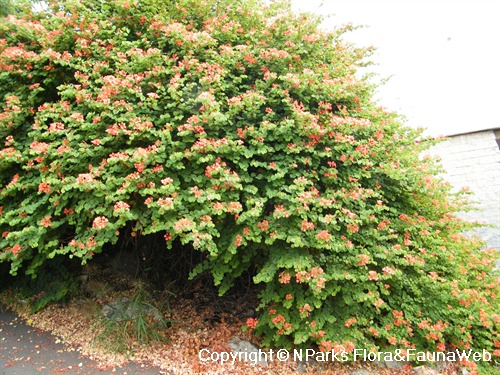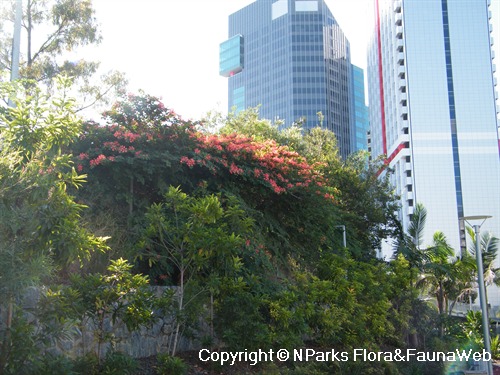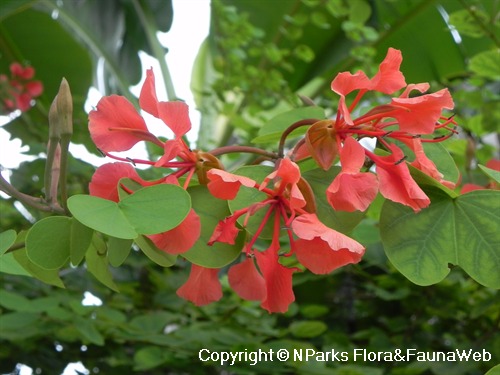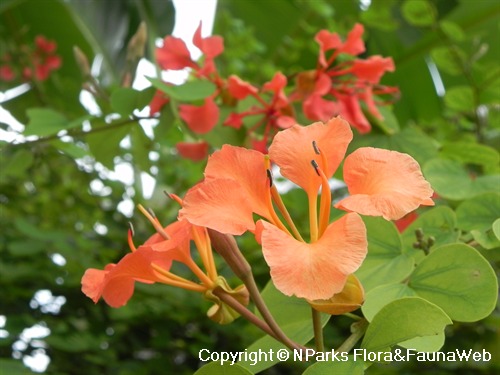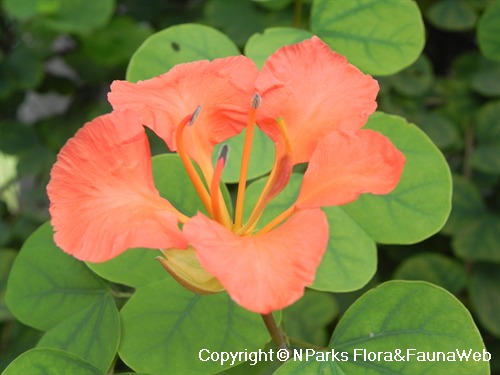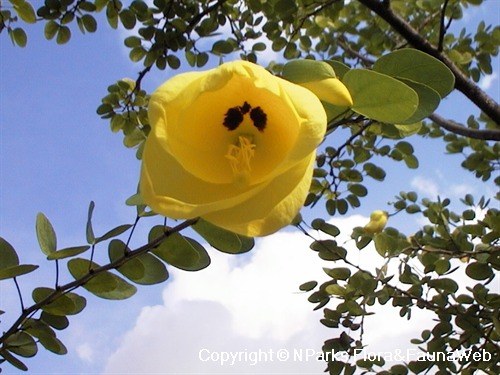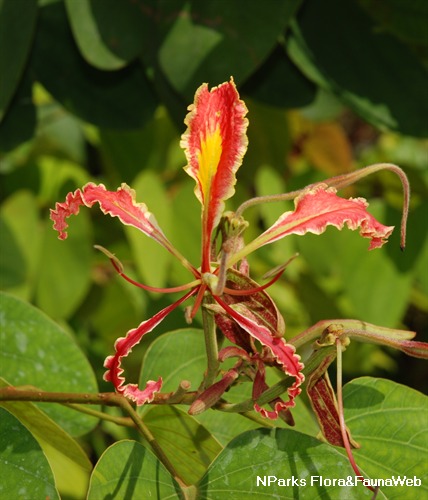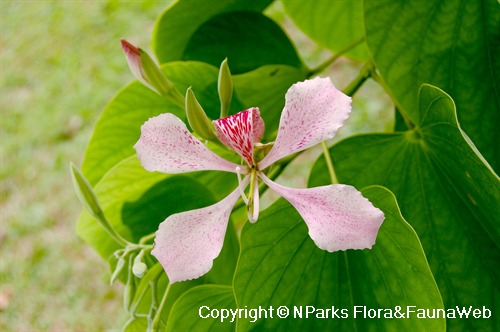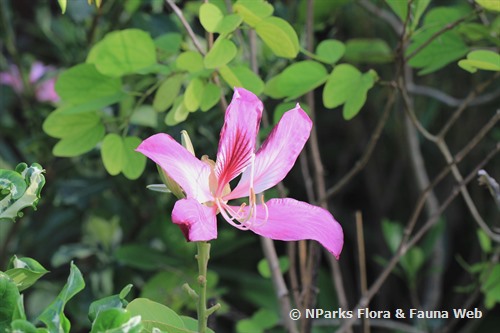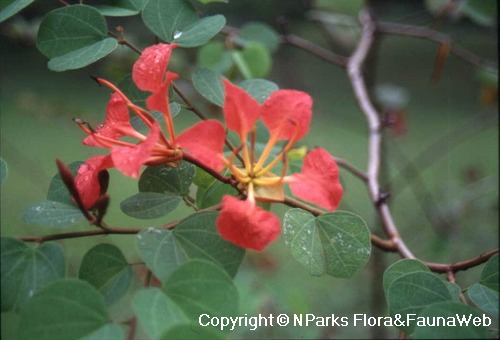
Back
Bauhinia galpinii N.E. Br.
| Family Name: | Fabaceae (Leguminosae) |
| Synonyms: | Bauhinia punctata Bolle, Perlebia galpinii (N.E.Br.) A.Schmitz |
| Common Name: | Nasturtium Bauhinia, Red Bauhinia, Red-butterfly-tree, Pride of the Cape |
Name
Classifications and Characteristics
| Plant Division | Angiosperms (Flowering Seed Plants) |
|---|---|
| Plant Growth Form | Shrub |
| Lifespan (in Singapore) | Perennial |
| Mode of Nutrition | Autotrophic |
| Maximum Height | 3 m |
Biogeography
| Native Distribution | South Africa, Mozambique, Swaziland and Zimbabwe. |
|---|---|
| Native Habitat | Terrestrial |
| Preferred Climate Zone | Tropical |
| Local Conservation Status | Non-native (Horticultural / Cultivated Only) |
Description and Ethnobotany
| Growth Form | Semi-deciduous scandent shrub with leaves resembling a butterfly in shape, able to grow up to about 3 m tall. |
|---|---|
| Flowers | Flowers are red to orange and borne in clusters near the ends of the branches. |
| Fruit | Fruit is a narrow, brown pod. |
| Cultivation | It can be propagated from seeds but it generally does not set seeds readily as it may be self-sterile. |
| Etymology | Genus Bauhinia is named after Swiss botanists Caspar (Gaspard) Bauhin (1560 - 1624) and his brother Johann (Jean) (1541 - 1613). Species galpinii is named after Ernst Eduard Galpin of Barberton (1858 - 1941), who was the author on the flora of Drakensberg. |
Landscaping Features
| Desirable Plant Features | Ornamental Flowers |
|---|
Plant Care and Propagation
| Light Preference | Full Sun |
|---|---|
| Water Preference | Moderate Water |
| Plant Growth Rate | Moderate |
| Rootzone Tolerance | Well-Drained Soils |
| Propagation Method | Seed, Stem Cutting |
Foliar
| Foliage Retention | Evergreen |
|---|---|
| Mature Foliage Colour(s) | Green |
| Leaf Area Index (LAI) for Green Plot Ratio | 4.5 (Shrub & Groundcover - Dicot) |
Floral (Angiosperm)
| Flower Colour(s) | Orange, Red |
|---|
Image Repository
Others
| Master ID | 426 |
|---|---|
| Species ID | 1722 |
| Flora Disclaimer | The information in this website has been compiled from reliable sources, such as reference works on medicinal plants. It is not a substitute for medical advice or treatment and NParks does not purport to provide any medical advice. Readers should always consult his/her physician before using or consuming a plant for medicinal purposes. |

